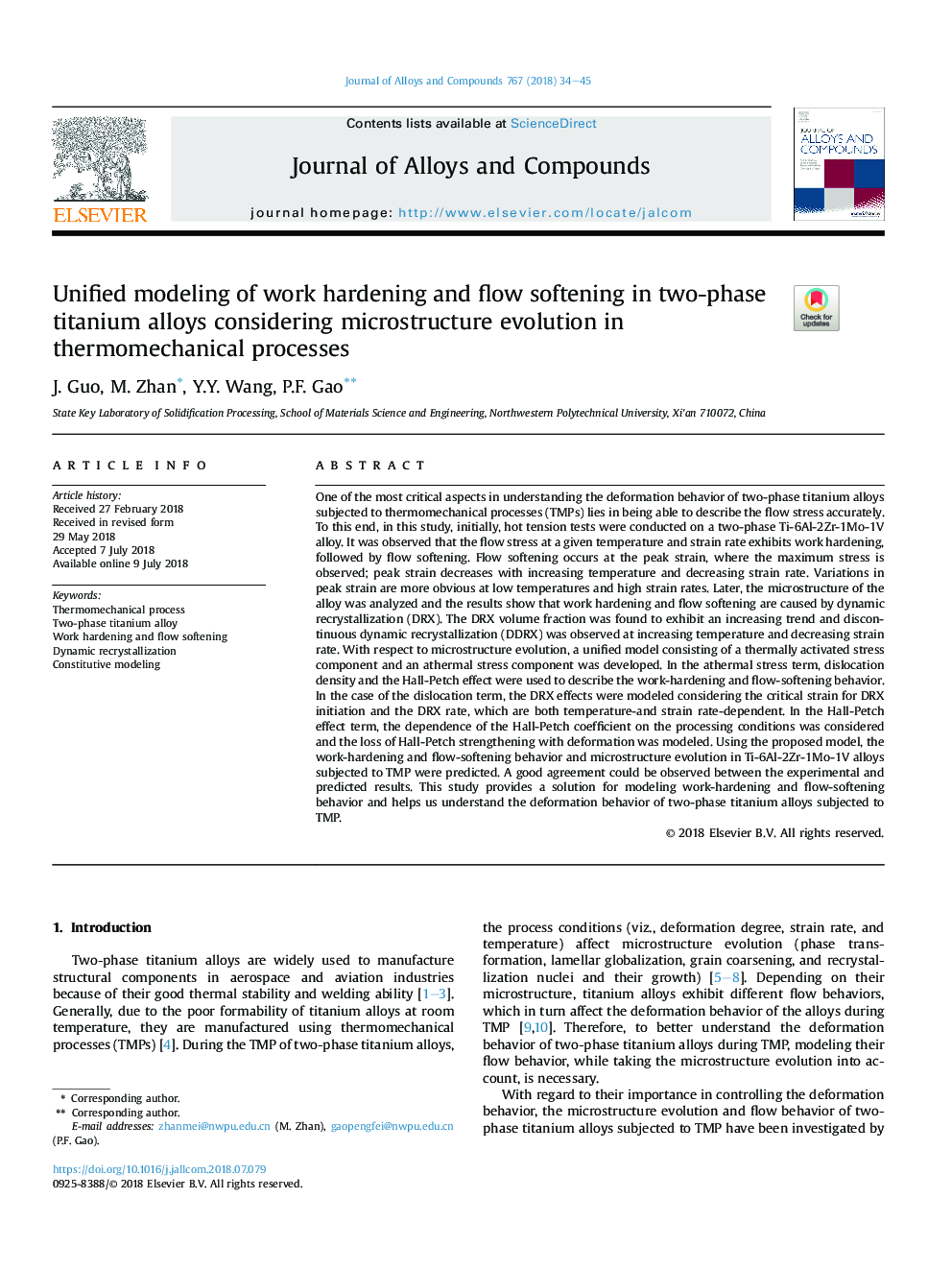| کد مقاله | کد نشریه | سال انتشار | مقاله انگلیسی | نسخه تمام متن |
|---|---|---|---|---|
| 7990147 | 1516127 | 2018 | 12 صفحه PDF | دانلود رایگان |
عنوان انگلیسی مقاله ISI
Unified modeling of work hardening and flow softening in two-phase titanium alloys considering microstructure evolution in thermomechanical processes
ترجمه فارسی عنوان
مدلسازی یکپارچه سخت شدن کار و تسریع جریان در آلیاژهای تیتانیوم دو مرحله با توجه به تکامل میکروارگانیسم در فرایندهای ترمومکانیک
دانلود مقاله + سفارش ترجمه
دانلود مقاله ISI انگلیسی
رایگان برای ایرانیان
کلمات کلیدی
فرایند حرارتی آلیاژ تیتانیوم دو فاز، سخت شدن کار و تسریع جریان، دوباره سازی دینامیک، مدل سازی پایه،
موضوعات مرتبط
مهندسی و علوم پایه
مهندسی مواد
فلزات و آلیاژها
چکیده انگلیسی
One of the most critical aspects in understanding the deformation behavior of two-phase titanium alloys subjected to thermomechanical processes (TMPs) lies in being able to describe the flow stress accurately. To this end, in this study, initially, hot tension tests were conducted on a two-phase Ti-6Al-2Zr-1Mo-1V alloy. It was observed that the flow stress at a given temperature and strain rate exhibits work hardening, followed by flow softening. Flow softening occurs at the peak strain, where the maximum stress is observed; peak strain decreases with increasing temperature and decreasing strain rate. Variations in peak strain are more obvious at low temperatures and high strain rates. Later, the microstructure of the alloy was analyzed and the results show that work hardening and flow softening are caused by dynamic recrystallization (DRX). The DRX volume fraction was found to exhibit an increasing trend and discontinuous dynamic recrystallization (DDRX) was observed at increasing temperature and decreasing strain rate. With respect to microstructure evolution, a unified model consisting of a thermally activated stress component and an athermal stress component was developed. In the athermal stress term, dislocation density and the Hall-Petch effect were used to describe the work-hardening and flow-softening behavior. In the case of the dislocation term, the DRX effects were modeled considering the critical strain for DRX initiation and the DRX rate, which are both temperature-and strain rate-dependent. In the Hall-Petch effect term, the dependence of the Hall-Petch coefficient on the processing conditions was considered and the loss of Hall-Petch strengthening with deformation was modeled. Using the proposed model, the work-hardening and flow-softening behavior and microstructure evolution in Ti-6Al-2Zr-1Mo-1V alloys subjected to TMP were predicted. A good agreement could be observed between the experimental and predicted results. This study provides a solution for modeling work-hardening and flow-softening behavior and helps us understand the deformation behavior of two-phase titanium alloys subjected to TMP.
ناشر
Database: Elsevier - ScienceDirect (ساینس دایرکت)
Journal: Journal of Alloys and Compounds - Volume 767, 30 October 2018, Pages 34-45
Journal: Journal of Alloys and Compounds - Volume 767, 30 October 2018, Pages 34-45
نویسندگان
J. Guo, M. Zhan, Y.Y. Wang, P.F. Gao,
